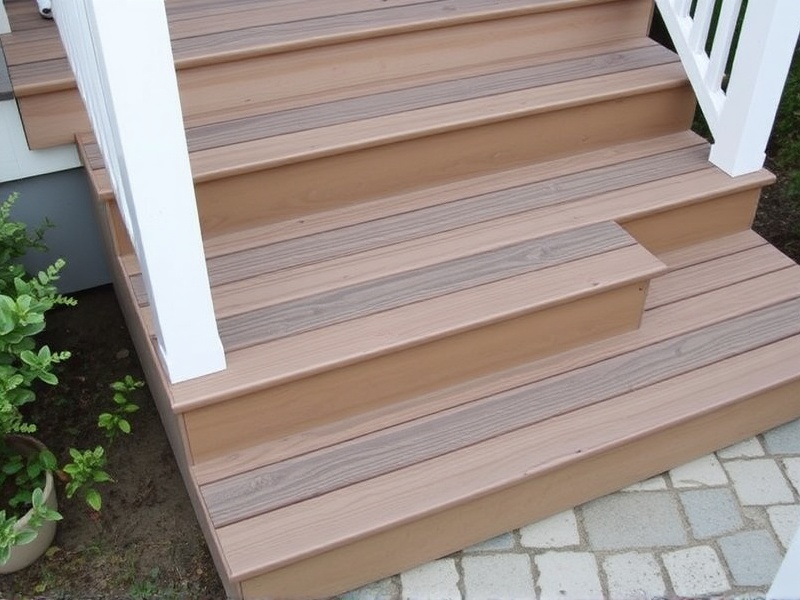Our Location
304 North Cardinal St.
Dorchester Center, MA 02124
Explore the advantages and disadvantages of using composite decking for stair treads, helping homeowners make an informed decision about their outdoor renovation projects.

Composite decking has become an increasingly popular choice for outdoor living spaces due to its durability and low maintenance requirements. However, when it comes to using composite decking for stair treads, there are several factors to consider. This article aims to provide a comprehensive analysis of the pros and cons associated with using composite decking for stair treads, covering aspects such as cost, environmental impact, installation difficulty, and long-term performance.
One of the primary considerations when choosing materials for any construction project is the cost. Composite decking can be more expensive upfront compared to traditional wood options. According to a study by HomeAdvisor, the average cost of composite decking ranges from $30 to $50 per square foot, while pressure-treated lumber costs between $15 to $25 per square foot. However, the higher initial cost of composite materials may be offset by their longer lifespan and reduced maintenance needs over time. For instance, composite materials require less frequent staining or painting, which can result in significant savings on upkeep.
Another important aspect to consider is the environmental impact of using composite decking for stair treads. Composite materials are often made from recycled plastic and wood fibers, which can help reduce waste in landfills. Additionally, they do not require chemical treatments that could leach into the soil or water systems. However, the production process of composite materials can still have a carbon footprint. It is essential to choose manufacturers that follow sustainable practices and use eco-friendly manufacturing processes. For example, some companies use solar energy in their production facilities to minimize their environmental impact.
When it comes to installing composite decking for stair treads, the process can be more challenging than working with traditional wood. The material is heavier and more difficult to cut and shape, requiring specialized tools and techniques. However, many manufacturers offer detailed installation guides and support services to assist homeowners and contractors. Proper installation is crucial for ensuring the longevity and safety of the stair treads. According to a guide by Lowe’s, following the manufacturer’s instructions closely can help ensure a successful installation.
One of the key advantages of composite decking is its long-term performance. Unlike natural wood, composite materials are resistant to rot, insects, and weather-related damage. This makes them an excellent choice for high-traffic areas like stair treads, where they are exposed to constant wear and tear. Composite materials also maintain their color and appearance over time, reducing the need for frequent replacements or repairs. A study published in the Journal of Building Engineering found that composite materials had a longer service life compared to traditional wood, making them a cost-effective option in the long run.
Using composite decking for stair treads offers numerous benefits, including durability, low maintenance, and environmental sustainability. While the initial cost may be higher, the long-term savings and performance make it a worthwhile investment. However, it is essential to carefully consider the installation process and choose reputable manufacturers that prioritize sustainable practices. By weighing these factors, homeowners and builders can make informed decisions about whether composite decking is the right choice for their stair treads.
HomeAdvisor – Cost of Decking Materials
Lowe’s – Composite Decking Installation Guide
Journal of Building Engineering – Longevity of Composite Decking